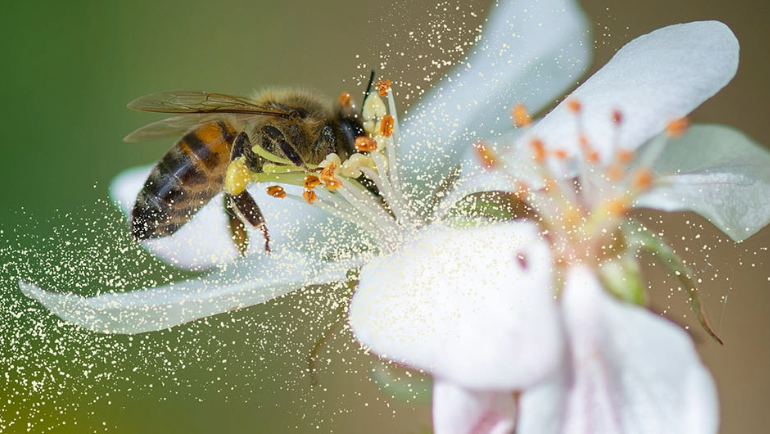Is mental health worse on high pollen days?

More than 47,000 people died by suicide and more than 300,000 were treated in emergency rooms for self-harm injuries in 2018. Those numbers are part of a trend than has been increasing for a decade, according to the Centers for Disease Control and Prevention.
Is it possible that increased pollen levels tied to global warming are a factor?
Shooshan Danagoulian, Ph.D., associate professor of economics in Wayne State University’s College of Liberal Arts and Sciences, has received a two-year, $125,000 grant from the American Foundation for Suicide Prevention to serve as principal investigator for the study, “Seasonal Allergy Blues: Is Mental Health Worse on High Pollen Days?”

For Danagoulian – who has previously analyzed data and published on pollen’s impact on crime – her interest is personal.
“It stems from the fact when I have allergies, I tend to be more irritable, more sluggish and tend to not make good judgments, so I wanted to find out if this affects behaviors more widely,” said Danagoulian.
Seasonal allergies triggered by pollen from trees, grasses and weeds affect nearly 400 million people globally, and up to 20% of the U.S. population. Allergies trigger inflammation of tissue and increased secretion of mucus, resulting in nasal congestion, watery eyes, irritated throat, itching, sneezing and runny nose. Although those symptoms may sound innocuous, pollen is also known to cause reduced quality of sleep, daytime drowsiness, reduced cognitive ability – all known factors in risk of suicide.
“We are not saying that high pollen makes us want to take our own life,” said Danagoulian. “Instead, it’s this idea of having a persistent feeling of being unwell and it accumulates over time until a particularly high-pollen day can just tip you over the edge.”
The project will use three newly available, high-frequency data sources to quantify the impact. The sources are daily pollen measurements from 33 locations across the country collected by volunteers of the National Allergy Bureau, mortality data from the National Vital Statistics System of more than 446,000 suicides with exact dates of death and ZIP codes of the decedents, and a novel health insurance claims database of 18 million privately insured individuals.
In addition to anticipating a correlation between increased pollen levels and increased mental health care visits and suicides, the research team also hypotheses it will find a stronger association in rural communities.
“In rural areas you have agriculture, you have more trees, more greenery, so that’s one contributing factor. A second contributing factor is our rural areas are also where we have shortages of mental health practitioners. We think this combination could result in even more exposure and more vulnerability,” said Danagoulian.
The project proposal states, “While pollen is only one of the many environmental factors that affect mental health and suicide, we will rely on daily fluctuations in pollen levels to isolate its association with mental health and suicide and account for myriad confounding factors by controlling for highly granular location and time effects.”
Contact info
Julie O'Connor
Director, Research Communications
Phone: 313-577-8845
Email: julie.oconnor@wayne.edu